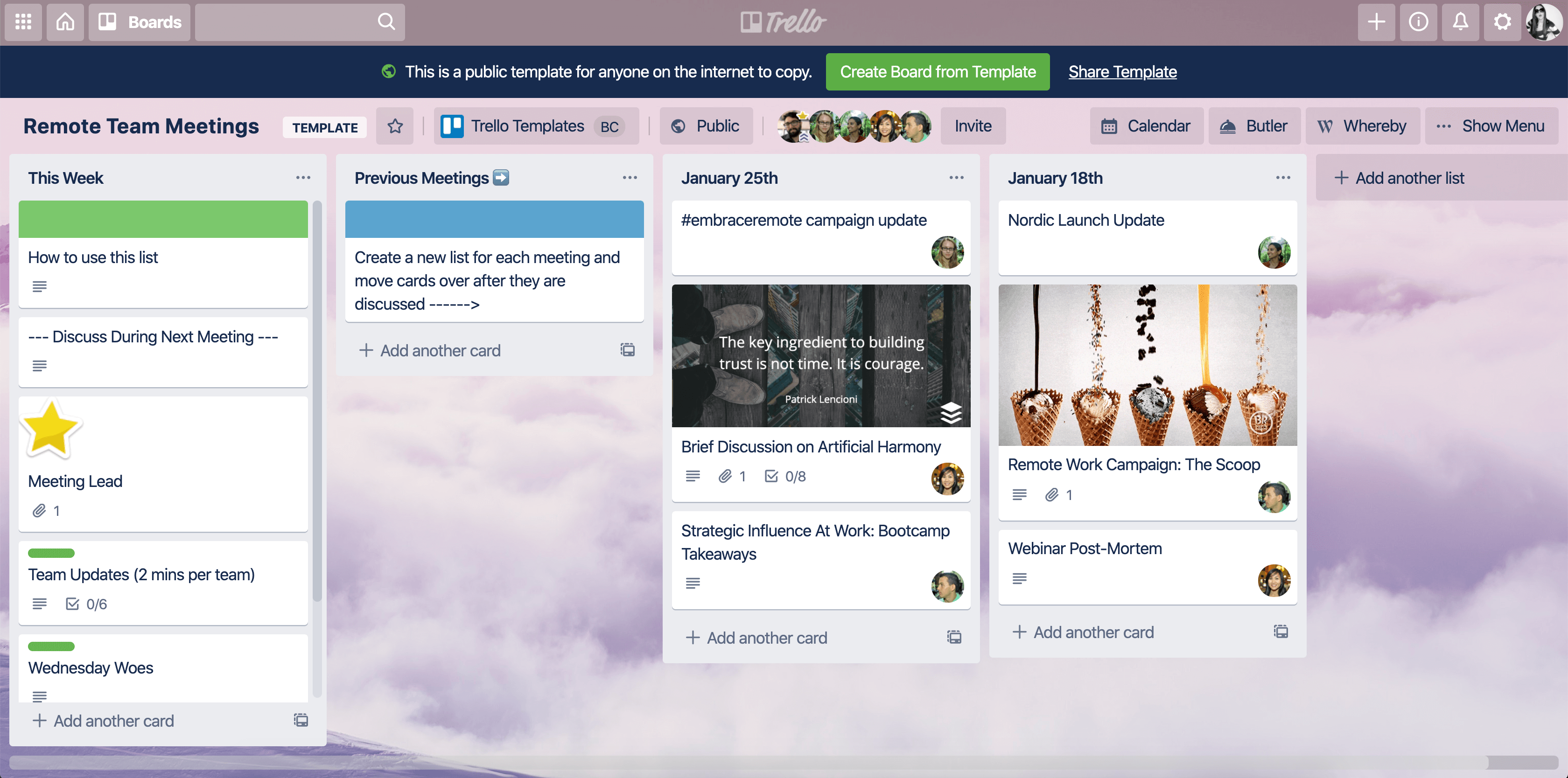Remote work is having a serious moment—and, according to many experts, the shift towards telecommuting is here to stay. In fact, Global Workplace Analytics estimates that 25 to 30 percent of the workforce in the United States will be working from home multiple days per week by the end of 2021.
But if you and your team are new to the WFH life, navigating the transition can be challenging. What tools do you need? What kind of structure will set your team (and yourself) up for success? And how can you make sure you’re being effective at work and at home when your home and your office are now one and the same?
We asked Kevin Eikenberry, remote work expert and author of The Long-Distance Leader: Rules for Remarkable Remote Leadership, for his insights on how leaders can navigate the transition from working in an office to working from home, both for themselves and for their teams. Plus, how to empower everyone to do their best work in the process!
The Three-O Model For Effective Leadership Of Remote Teams
According to Eikebnerry, when it comes to effective leadership, there are three things you need to keep in mind or more specifically, three O’s.
“As leaders, there are three O’s that everything about the role revolves around; Outcomes, Others, and Ourselves,” says Eikenberry.
Individually, all of these elements are important. But each element plays off of the others; for example, you can’t be an effective leader if you’re hyper-focused on achieving a certain outcome if it’s at the expense of your team or yourself.
“Leadership is always about reaching outcomes…If we were already achieving something [fully], we wouldn’t need a leader,” says Eikenberry. “And we can’t do it by ourselves. It’s not an individual task. It’s something we do with others, through others, with the help of others.”
“So leadership is always about reaching valuable outcomes with and through others—and yet we’re part of the equation too, as the leader,” continues Eikenberry. “Who we are has an impact on how we lead, so we must take care of ourselves and work on ourselves as a part of [effective leadership].”
The three O’s are always a critical part of effective leadership —but they’re even more important in remote environments.
“That’s the context of leadership, period—not just for remote,” says Eikenberry.
“But when you think about it in a remote context, the outcomes have to be even clearer, how we interact with others is more important and we’ve got to be really clear about who we are so that we can be successful when we’re helping a team that’s remote.”
So, what are some Three O-friendly strategies you can use to effectively manage your team when working remotely?
Set Clear Expectations With Your Team
When you’re working with your team in the same location, it’s easy to pop into someone’s office to ask a question, get clarification on an assignment, or figure out how to leverage a new workflow tool. But when everyone is working from home, those office pop-ins just aren’t possible—which is why it’s important to set crystal clear expectations with your team.
Obviously, you need to set expectations around what work is expected from your team while they’re working from home; think deadlines and deliverables. But as you’re transitioning to a WFH setting, setting expectations around how that work is done is just as important.
“The big key is leaders must have clear expectations about what the work is and how we’re going to do the work,” says Eikenberry. “Everything’s changed about the ‘how’ [of work], which means that we’ve got to be clear with our teams about how we want them to interact, what tools to use when, how often…to meet, [and] how…to get the work done—not just what the work is.”
Create clear expectations around your team’s remote work workflows. If someone has a question:
- Should they send an email or post to the team Slack channel?
- Which digital tools do they need to download to support your new workflow (for example, are you using a new video conferencing software and a project management platform)?
- How often should employees check in with their coworkers and managers—and how can they signal to the team when they’re on a break?
Pull all the necessary expectations and information about workflows together into a comprehensive remote work handbook or knowledge base then distribute it to your entire team to get everyone on the same page.
The more clarity you can provide to your team on not only what’s expected of them (outcomes), but how they can achieve their goals in this WFH environment (others), the more successful the transition will be for everyone involved—including leadership (ourselves).
Create Opportunities For Socializing
Opportunities for conversation don’t “just happen” when you’re working virtually—which is why, as a leader, it’s so important to create opportunities for collaborating, socializing, and connecting.
“We can’t just have the serendipitous, ‘see people in the hallway’ conversations because they don’t exist,” says Eikenberry. “But there are things that we already know that we could do virtually [to recreate those conversations].”
Eikenberry recommends looking for ways to virtually recreate the water cooler moments that happen naturally in person. Things like virtual coffee breaks and happy hours can go a long way in helping your team feel more connected while they’re working from home.
“If we had a cup of coffee before, why can’t we now?,” says Eikenberry. “We turn on our webcams, we have a cup of coffee.”
While conversations will sometimes naturally veer into work territory, it’s also important to carve out time just to socialize. “Our team, we had lunch last week virtually and there were two rules,” says Eikenberry. “Rule number one was no work. Rule number two is some laughter—and we achieved both.”
Making time to laugh and connect with your team, especially since you can’t laugh or connect in person, (ourselves and others) is a must when building an effective and sustainable remote work culture—and can help give people the boost they need to get things done (outcomes).
Make Virtual Meetings More Effective With Planning
Meetings can be challenging at the best of times. But now that everyone is working remotely, it’s important to take extra steps to ensure your meetings are productive and effective.
As mentioned, social time is crucial for team morale—so working some socializing time into your meeting structure is a must. “When we have a regular meeting in a conference room, people show up when they show up and usually people are showing up three four or five six minutes before and they’re chatting,” says Eikenberry. “That’s part of where the social interaction happens. So make sure you’re opening up your meeting rooms early enough so that as people arrive they can…just chat, to just catch up. And so then when the meeting starts, they’ve had the chance for some social interaction.”
Taking more of a leadership role in your meetings can also help keep things on track.
“As a leader, you’re going to need to facilitate more clearly,” says Eikenberry. “The word ‘facilitates’ means ‘to make it easier’, and that’s what we need to do—is to help make it easier for people to participate and contribute in these meetings.”
In order to facilitate an effective meeting, set a clear agenda and send it out to your entire team before the meeting; that way, everyone’s on the same page about what’s going to be discussed, what they need to prepare, and how the meeting is going to “flow.” Then, during the meeting, actively engage your team. Ask questions. Encourage participation. Make sure everyone has a chance to share their thoughts and insights.

You can use Trello to host your remote team meetings
Taking an active role in facilitating the meeting (ourselves), engaging your team (others), and encouraging everyone to participate and contribute (outcomes) can make it easier for people to know how and when to chime in.
“You want to make sure that you’re getting everyone’s input and people are going to be even more reticent to participate without visual clues,” says Eikenberry. “Even if we’re using our webcams, it’s hard to know when it’s my turn.”
Create Clear Boundaries Between Work And Home—For Yourself And Your Team
One of the biggest challenges of working from home is separating work from home. When your home is your office, it can be easy for your work life to impede on your home life (or vice versa)—and for your outcomes at both work and home to suffer as a result.
That’s why it’s so important to set clear boundaries and keep your work and your home separate—both for yourself and for your team.
Carve out a space in your home that you use strictly for work. If you have an office with a door, great. If not, set up a dedicated workspace somewhere else in your home, whether that’s a desk in the corner of your dining room or a specific seat at your kitchen table. Let your partner, family, or roommates know that when you’re in your workspace, you’re at work and aren’t to be disturbed unless there’s an emergency—and encourage your team to do the same.
[Thread] Show us your remote workspaces! #EmbraceRemote pic.twitter.com/gmyWecrs2e
— Trello (@trello) April 30, 2020
“You’ve got to find a place to work that works for you as best you can,” says Eikenberry. “And put some boundaries around when you work and when you won’t and when people in the house know that you’re working and when you’re not.”
Routine can also help you create a sense of separation between your work life and your home life.
“You still need routines,” says Eikenberry. “You had a routine when you went to the office, right? There were things you did before you left [for the day]… You had a routine and now you don’t, so you need to create a new routine.”
Establish a morning routine, whether that’s having a cup of coffee, reading a book, or getting in a workout (or all three!); then, when that routine is over, it acts as a signal that it’s time to start work. Encourage your team to get their own routines in place—and to share with the group what routines are working best for them. As a leader, it’s important that you set and practice the recommendations you’re preaching.
Then—and this is important—get in the habit of stopping work at the same time every day. Having a routine stop time for you and your team will make it easier for everyone to shut down for the day and engage in their home life—even though your homes are currently working double-time as your office.
“You’ve got to decide when you’re not going to work,” says Eikenberry. “[Otherwise], ‘I’ll just check one more email’… becomes five more emails, becomes two hours, right? So build yourself some routines that…end the day instead of a [daily] decision about when you’re going to stop working.”

Make The Most Out Of Working From Home (And Cut Yourself Some Slack)
These strategies can make the process of working from home easier and more effective for you and your team. Everyone is doing their best, but there are bound to be some bumps in the road as you transition to this new way of work (and, in many ways, this new way of life).
So do what you can to make working from home as easy, effective, and productive as possible—but also make sure you cut your team (and yourself) some slack as you navigate this transition.
Next: Managers: Here’s A 7-Step Practical Guide To Leading A Remote Team










































